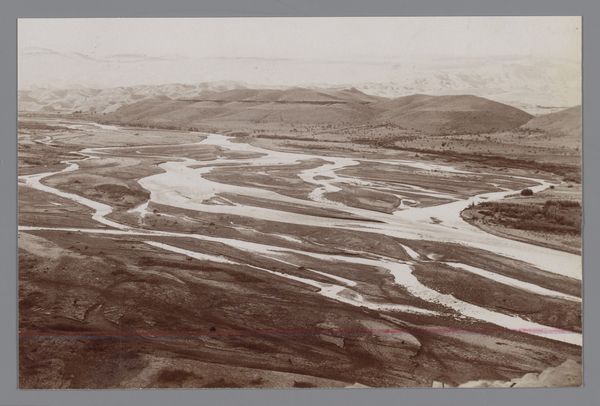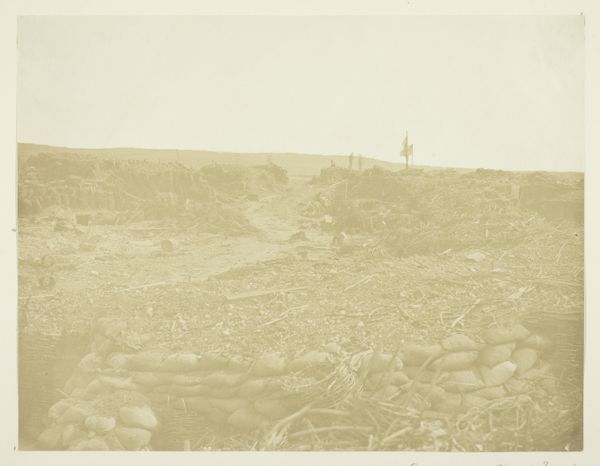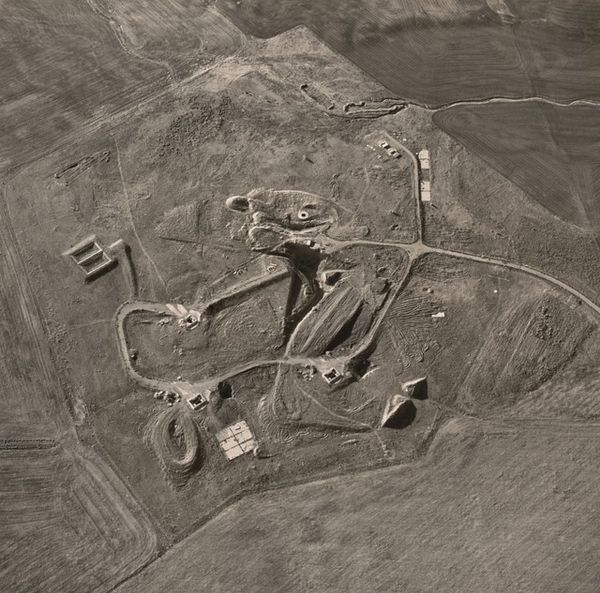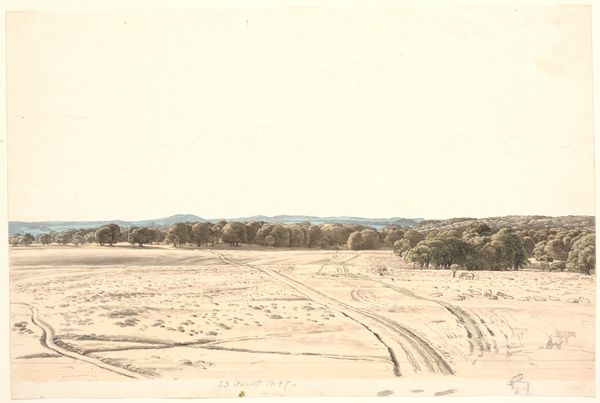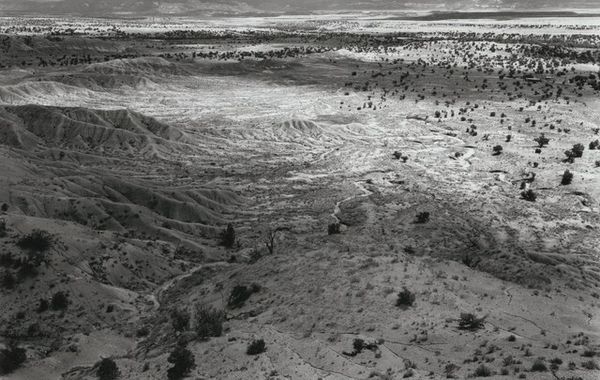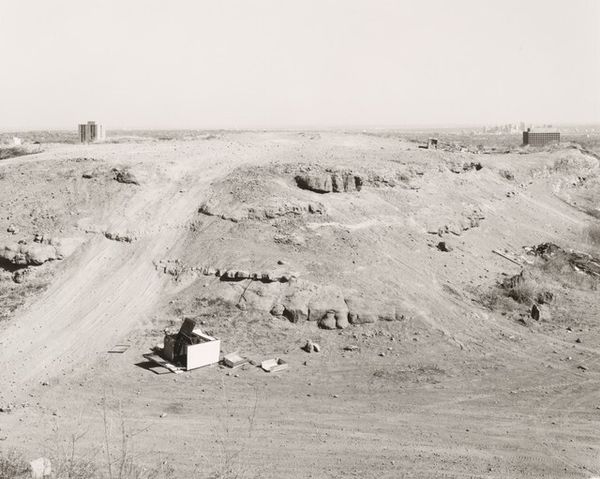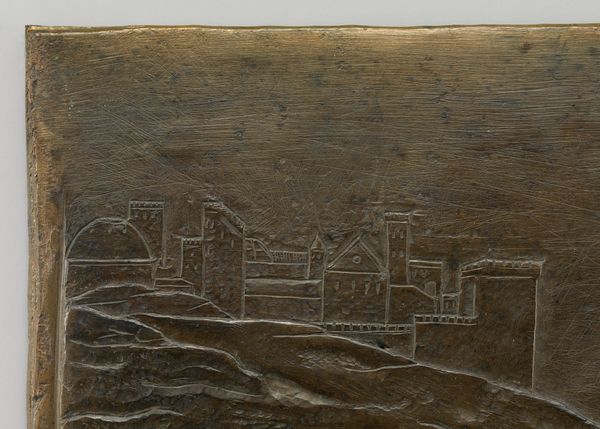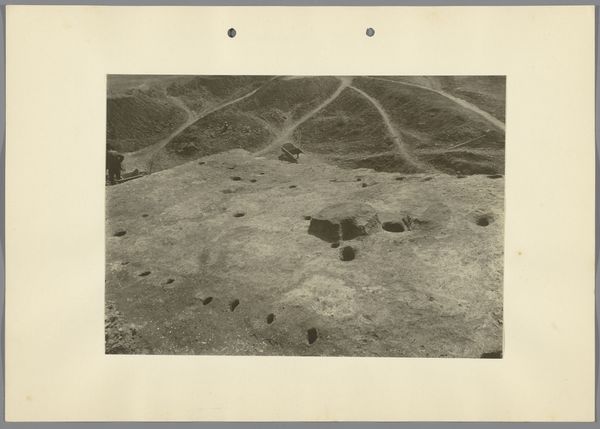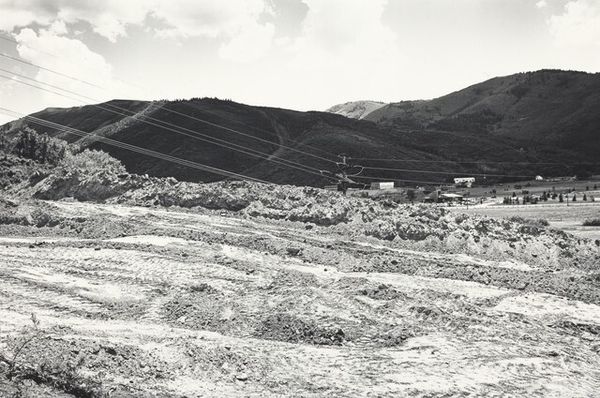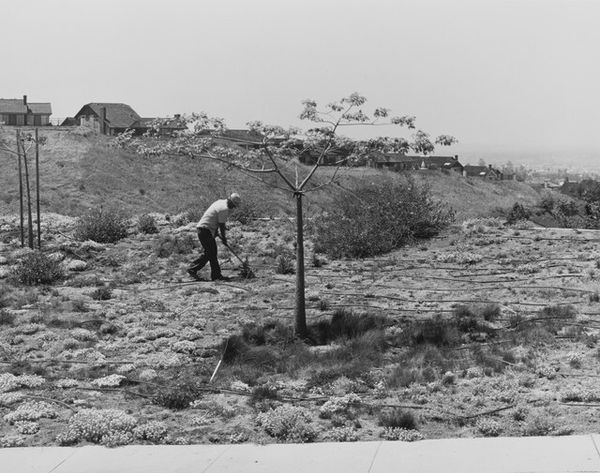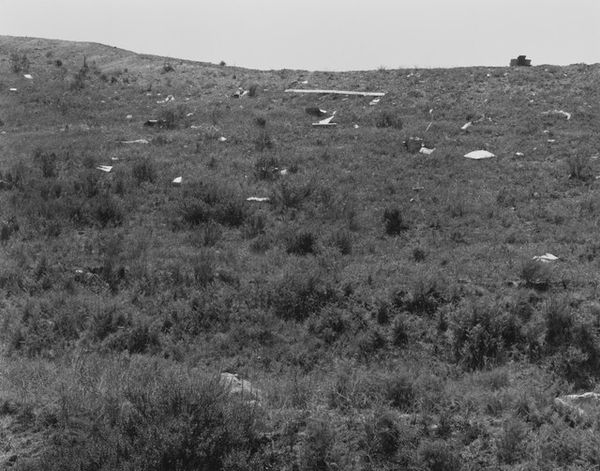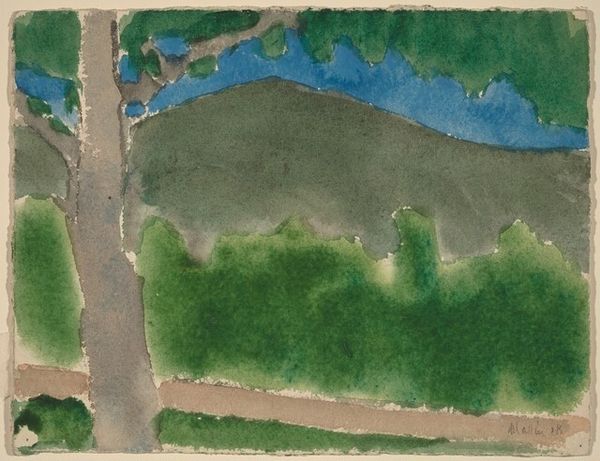
photography
#
landscape
#
photography
#
realism
Dimensions: height 5 cm, width 5 cm
Copyright: Rijks Museum: Open Domain
Curator: "Achter het front," or "Behind the Front," a photograph by David Ketel, taken in 1952. It resides here at the Rijksmuseum. What are your initial thoughts? Editor: Stark. I'm immediately struck by the almost surgical precision with which Ketel has captured this landscape from above. The pale river snaking through the center creates a rigid structure around the haphazard assemblage of the barracks. Curator: The date is significant. 1952 places this relatively soon after World War II. Ketel’s photographic realism offers us an unflinching view of post-war military infrastructure, the land scarred and transformed by conflict, now re-purposed as something like military campground in waiting. The aerial perspective grants us, the public, an unsettling distance, and it prompts one to think of governmental surveillance practices of that time, especially their function as tools of power. Editor: True. That vantage point shapes the work completely. It's almost dehumanizing in its detachment. Look how those small structures echo each other formally: rectangles and squares contrasted against the circles and spirals visible around them. There's an unexpected beauty in that repetition and interplay, in the way light and shadow define each volume. Curator: Consider also that it could be meant to display a sense of progress and order, as an answer to the public cry for some hope following global strife, and as an artifact which highlights the intersection between militarization and modernization during the Cold War period. Editor: But, look, this arrangement seems far from “ordered," doesn’t it? Notice how the neutral tones dominate: grays, browns, beiges and olives are hardly aspirational colors, don’t you agree? The overall impression for me is one of austerity—an emphasis on practical form rather than decoration. This visual parsimony underscores, if anything, an atmosphere of melancholy stillness rather than future hope. Curator: I find myself more preoccupied by the image’s historical implications, but I acknowledge your focus on Ketel’s meticulous visual choices is important, even vital, to consider, because that makes us wonder why. Editor: It's the tension between those points, history and the way an image looks, that make it really memorable. Thanks for highlighting it for us today. Curator: The pleasure was all mine. Let us carry this knowledge and understanding into further viewings.
Comments
No comments
Be the first to comment and join the conversation on the ultimate creative platform.
